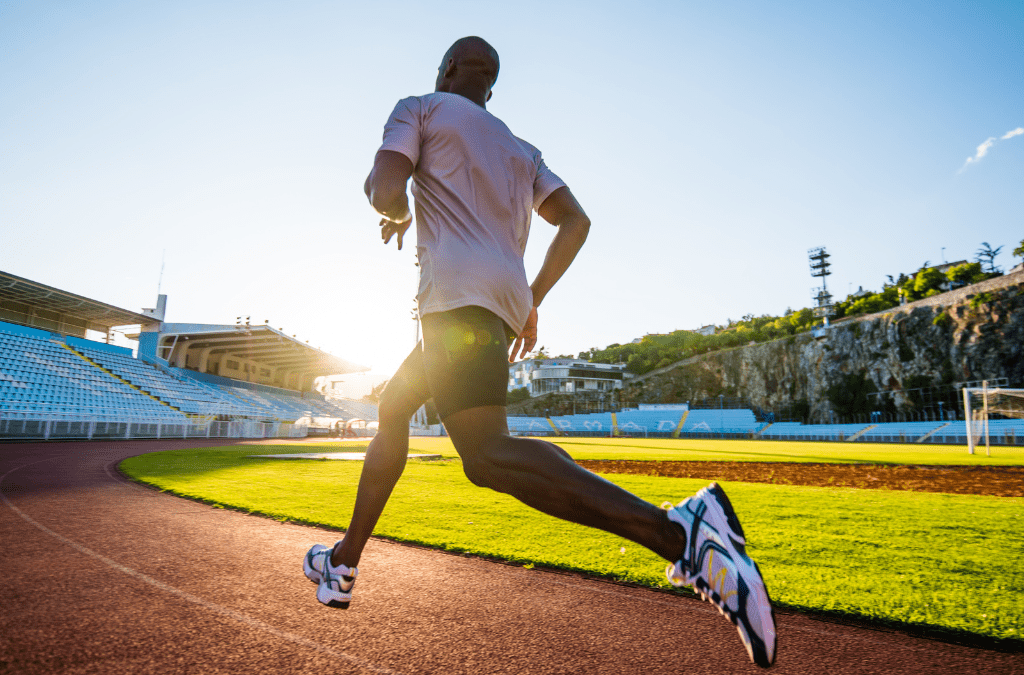Key Takeaways:
- Runners face shin splints, runner’s knee, plantar fasciitis, and Achilles tendonitis.
- Early diagnosis through assessments and gait analysis is crucial.
- Avid Sports Medicine provides tailored treatments like physical therapy, PRP, and shockwave therapy.
- Proper warm-up, quality footwear, cross-training, and rest help prevent injuries.
Running through the iconic hills of San Francisco is nothing short of exhilarating. Whether you’re cruising along the waterfront at sunrise or powering up those steep, winding streets, every stride is a moment of pure freedom. But let’s be honest, running, as much as we love it, isn’t without its challenges. Every runner understands that even the most scenic routes can lead to unexpected setbacks in the form of running injuries.
Common Running Injuries
Running injuries vary in severity and type. Some are minor inconveniences, while others can significantly impede performance. Understanding the common injuries is essential for timely intervention and long-term health.
Shin Splints
A frequent complaint among runners, shin splints are characterized by a persistent, dull pain along the front or inner edge of the lower leg. Often the result of overuse or a sudden change in training intensity, this condition can escalate if not addressed promptly.
Runner’s Knee
Known medically as patellofemoral pain syndrome, runner’s knee causes discomfort around the kneecap. This issue may stem from improper alignment, repetitive stress, or muscle imbalances. Persistent knee pain can signal that the joints are enduring more strain than they can handle.
Plantar Fasciitis
Plantar fasciitis involves inflammation of the tissue running along the bottom of the foot, resulting in sharp heel pain, especially noticeable with the first steps in the morning. This condition serves as an important reminder that even small injuries require attention to prevent further complications.
Achilles Tendonitis
The Achilles tendon, a critical connector between the calf muscles and the heel, can become inflamed through overuse or insufficient stretching. Whether encountered by casual joggers or dedicated runners, untreated Achilles tendonitis can evolve into a more severe problem.
Why Running Injuries Occur
Running injuries are rarely caused by a single factor. They often arise from a combination of elements that create a “perfect storm” of stress on the body.
The Impact of San Francisco’s Terrain
The city’s varied topography, with its challenging hills and mixed surfaces, demands extra from the body. Runners must navigate steep gradients and uneven paths, which can result in undue stress on muscles, tendons, and joints. This constant challenge is a primary contributor to running-related injuries in the area.
Training Intensity and Overuse
Many runners push themselves to achieve new personal records, sometimes increasing mileage or intensity too quickly. This overexertion can lead to chronic stress injuries, as the body is forced to adapt rapidly to increased demands without sufficient time for recovery.
Footwear and Technique
Proper footwear plays a critical role in injury prevention. Worn-out shoes or those that do not provide adequate support can disrupt natural running mechanics. Additionally, subtle misalignments in running form can lead to a cascade of issues over time. Attention to both proper gear and technique is essential for reducing injury risk.
The Importance of Diagnosis and Early Intervention
Timely diagnosis is crucial in preventing minor issues from escalating into chronic injuries. Early intervention often makes the difference between a brief setback and a long-term problem.
Comprehensive Assessments
A detailed assessment helps pinpoint the exact cause of discomfort. By evaluating factors such as muscle strength, balance, and overall biomechanics, professionals can tailor a treatment plan that addresses the root of the issue rather than just the symptoms.
The Role of Gait Analysis
Gait analysis is an invaluable tool in understanding how a runner’s form contributes to injury. This evaluation method provides insights into the mechanics of each stride, identifying imbalances and inefficiencies. With this information, adjustments can be made to enhance performance and reduce the risk of future injuries.
Treatment Options at Avid Sports Medicine
Avid Sports Medicine offers an impressive array of services designed to meet the specific needs of runners. Their multi-disciplinary approach ensures that each patient receives a customized treatment plan, addressing both immediate concerns and long-term recovery.
Physical Therapy
Physical therapy is a cornerstone of injury rehabilitation. The sessions are not limited to generic exercises; rather, they are personalized to address specific weaknesses and imbalances. Customized routines focus on strengthening muscles, enhancing flexibility, and correcting movement patterns, key components in preventing re-injury.
Sports Medicine Massage
Sports medicine massage goes beyond mere relaxation. It is a therapeutic technique aimed at relieving muscle tension, increasing blood circulation, and reducing pain. This service is particularly popular among runners, as it helps to maintain muscle elasticity and prevent stiffness.
Platelet Rich Plasma (PRP) Therapy
PRP therapy harnesses the body’s own healing properties to accelerate recovery. By concentrating platelets and growth factors, this treatment promotes the repair of damaged tissues. It serves as a natural boost to the body’s healing process, offering an effective solution for stubborn injuries.
Stem Cell Therapy
Stem cell therapy represents a groundbreaking approach in regenerative medicine. By utilizing the body’s inherent capacity for healing, this treatment helps repair and regenerate damaged tissues. Runners experiencing chronic injuries may find this option particularly beneficial as it supports long-term recovery.
EPAT/Shockwave Therapy
For those who prefer non-invasive methods, EPAT/Shockwave Therapy offers a viable alternative. This treatment employs sound waves to stimulate healing and reduce pain without the need for surgical intervention. Its efficiency makes it a popular choice for quickly getting back on track.
Lipogems
Lipogems focuses on regenerating joint and soft tissue health. This innovative treatment is especially useful for addressing long-standing issues that have resulted from years of repetitive strain. It offers a rejuvenating effect, helping the body recover from the rigors of regular running.
Ketamine Therapy
Although it may sound unconventional, ketamine therapy has shown promise in managing pain and alleviating symptoms of chronic injury-related discomfort. It offers relief to those who have been struggling with persistent pain, allowing for better overall management of recovery.
Strategies to Prevent Running Injuries
Prevention is often the best strategy in avoiding injuries altogether. With the right care and attention, many common injuries can be prevented before they even begin.
Listening to the Body
Recognizing early signs of discomfort is essential. When minor aches arise, they serve as important signals that the body may need rest or adjustments in training. Paying close attention to these cues can prevent small issues from evolving into serious injuries.
Warm-Up and Stretching
A proper warm-up is vital for preparing the muscles and joints for the demands of running. Dynamic stretching and light jogging help increase blood flow and flexibility, reducing the risk of strains and sprains. Incorporating these routines into every workout is a small investment that pays off in the long run.
Choosing the Right Footwear
Investing in quality running shoes is fundamental. Shoes that fit well and offer proper support help maintain proper alignment and absorb impact. Monitoring the condition of footwear and replacing it when necessary can greatly reduce the risk of injury.
Incorporating Cross-Training
Adding variety to a training routine can help balance the workload across different muscle groups. Activities such as cycling, swimming, or yoga not only improve overall fitness but also give specific muscles a chance to recover. Cross-training keeps routines fresh while preventing overuse injuries.
Regular Gait Analysis
Periodic gait analysis provides valuable feedback on running mechanics. Regular assessments can detect subtle issues before they become problematic. This preventative measure acts much like routine maintenance, ensuring that the body’s biomechanics remain in optimal condition.
Avid Sports Medicine is a Trusted Partner for Runners
Avid Sports Medicine offers a comprehensive suite of services tailored specifically for runners and athletes. With personalized treatment plans, advanced therapies, and a compassionate team, we are ready to help individuals overcome injuries and continue pursuing their passion for running. Runners looking to maintain peak performance are encouraged to schedule a consultation and experience the benefits of expert care.
By addressing issues early, maintaining proper training techniques, and investing in quality treatment and recovery strategies, the journey to injury-free running becomes a more attainable goal. The road ahead promises not only recovery but also a renewed opportunity to enjoy every stride along San Francisco’s iconic paths.
For those ready to reclaim their running journey, Avid Sports Medicine provides the expertise and support necessary to transform setbacks into stepping stones for a healthier, more active life. Book your appointment today and take the next step toward recovery.

